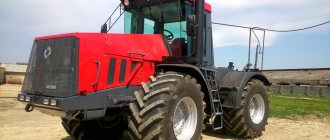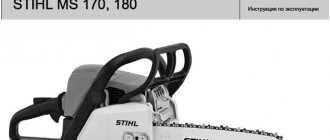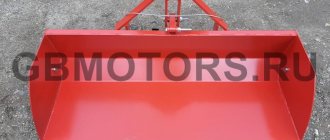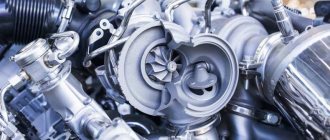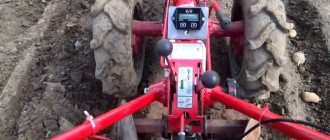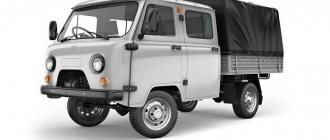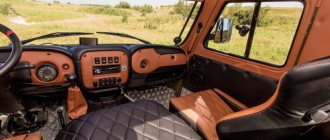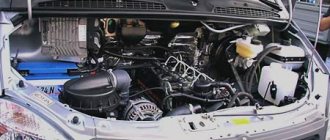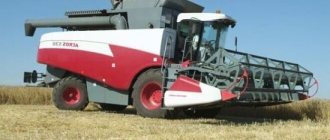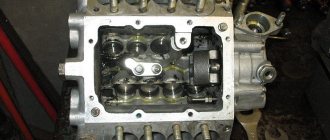Main criteria when choosing a bucket for a front loader
When figuring out which bucket to choose for a loader, the first thing you think about is the size and shape. But materials play an equally important role.
Buckets for front loaders are made of high-strength steel. Thanks to this, the loader can be used to handle both soft and bulk materials, as well as rock thresholds, frozen soils, etc. Buckets for highly specialized tasks are also produced.
The main criterion when choosing a bucket for a front loader is its strength and reliability.
XD
From the name it is clear that the group of super-reinforced rock products is special. In addition to the features inherent in RB representatives, here we can highlight special bucket sizes, as well as special steel grades used by manufacturers. In the second case, we are talking about either HB400 or HB500.
Ordering equipment of this type is advisable in cases where the development of highly abrasive rocks is required. You can also use a loader for underground work (mine excavation, for example) and for loading hot slag.
Design features of buckets
Before purchasing, you need to clearly decide what kind of work will be performed by the backhoe loader. Based on this, the design of the bucket is selected. He can be:
- different shapes and sizes;
- with a knife;
- with teeth (their number may also vary);
- with side cutters.
Look at the catalog: https://www.trz.ru/catalog/tekhnika/navesnoe-oborudovanie/kovshi-dlya-pogruzchikov/. In it you can see what types of loader buckets there are and how they differ from each other.
Bucket size and volume
An important characteristic by which a bucket for a front loader is selected is width. Most typical buckets range from 300mm to 920mm wide. The useful volume of attachments lies in the range of 0.07-1.3 m3. With such dimensions, the backhoe loader remains quite maneuverable and is capable of performing a wide range of tasks for loading and moving bulk and lump materials.
You don't need to decide which bucket to choose for your loader in order to close the issue with attachments once and for all and use it for all loading work. It is much more efficient to install the most suitable bucket for each operation - this will help increase the productivity of special equipment.
Remember that to change the bucket on a front loader you will need special equipment or a team of several people, since the weight of the attachment can reach up to 220 kg.
Special additional equipment
If the owner of loading equipment is interested in a quick-release bucket, he will probably be interested in the fact that one piece of equipment can be quickly replaced with another. A special element known as a quick coupler helps to do this. It has a lightweight design, which reduces power losses after installing a quick coupler.
When contacting suppliers to purchase this design, you need to emphasize that you need an element with high-quality hydraulics. In this regard, the German quick-couplers are the leaders.
Which bucket to choose for a loader according to the type of work
Now let’s figure out which bucket for a loader is suitable depending on the materials being processed and the type of work.
Basic.
This is the most basic bucket and often comes standard with a front loader. It is suitable for handling bulk and lump building materials, crushed stone, gravel, grain, and garbage collection.
Reinforced loader bucket.
It is similar in shape and size to a basic bucket, but is designed to handle heavier and more difficult materials. Its frame is reinforced with additional stiffening ribs. Suitable for turf, frozen or rocky soils, limestone and other chalk rocks.
Leveling bucket.
If you are looking for a loader bucket that is suitable for landscaping work, then choose a leveling one. It has a rectangular shape, stiffeners and a cutting edge. Such attachments are suitable for leveling the soil, creating embankments and ground fortifications, and digging shallow ditches and ditches.
Rock bucket.
Rock and rock attachments are designed with maximum reinforcement and are typically narrower than other types of front loader buckets to provide the most digging force. The rock bucket is used for rocky and frozen soils, granite, basalt, and when handling abrasive bulk materials.
Grab grip.
The grab bucket for a loader consists of two “jaws” that close and open using a hydraulic system. The grab gripper allows you to quickly reload materials into fills. Also, attachments can be used to unload materials and construction waste from pits and pits.
Grain bucket.
If you are looking for which loader bucket is most convenient for pouring grain and feed, then choose a grain one. It is lighter than other options because it is not designed to handle heavy materials. But due to weight reduction, fuel consumption during operations will be lower. This loader bucket is suitable for farms, livestock farms, warehouses and elevators.
Skeleton bucket.
The design of a skeletal bucket for a front loader resembles a sieve: the spans between the stiffening ribs are made in the form of a mesh. Such buckets are convenient for sifting bulk and lump materials; with their help, you can sift out fractions of different sizes directly during loading operations, which is very convenient. In addition, this is one of the successful examples of which loader bucket to use for digging up root crops - it sifts out pieces of earth, as a result, the roots take up less volume and have less weight.
High altitude bucket.
This front loader bucket is designed to be easy to operate in a raised position. This is a practical option when you need to load bulk materials into a body with high sides.
Bucket for manure and silage.
On farms, many operations involve cleaning, processing and applying manure. To do this, you will need to equip the front loader with a special bucket with long teeth or a mesh. This design allows for easy gripping of loose and soft substances without causing them to stick to the attachment.
Knowing which loader bucket is right for your job will help you purchase the most efficient and productive attachment.
Previously, we wrote about what a chiller refrigeration machine is and how it works.
Stop - tractors, taxes and fees! HTZ asks for help! October 18, 2013
Cat 390F being discontinued and replaced by the Cat 395 excavator April 4, 2020
New ANSI standards for lifts will take effect in December 04 January 2019
Belarus has great prospects for the supply of agricultural machinery to Russia August 27, 2014
Crawler bulldozer: how to choose reliable equipment
What types of tractors are there: photos, classification and types
DISD SD300. Using Doosan technology
Photo source: disd-loaders.ru
Breakout force: 160 kN Operating weight: 16,800 kg Maximum dump height: 3,215 mm
DISD SD300 loaders are manufactured at Doosan Infracore Shandong, China, and are assembled using both Korean and Chinese components. In particular, the machine is equipped with a low-speed Weichai engine with a power of 162 kW, and a choice of Doosan or Hanghi transmission is available.
Patented Doosan technologies are widely used in the design of the model. Thus, thanks to the installation of a drive axle of this brand and improved processing of the differential bevel gear, it was possible to increase the bending strength of this element by 34.6%. While the South Korean cooling system helped to significantly reduce the temperature of the hydraulic oil and engine coolant. The cabin is also made by Doosan. It has an all-round view: the point of view has been moved forward, the front field of view has increased by 25%. A standard integrated control system is provided. The working equipment is driven using joysticks. Air conditioning installed.
Photo source: disd-loaders.ru
South Korean technologies have also found application in the mechanisms of DISD SD300 gearboxes, the layout of units, adjustments and settings of fuel equipment. In turn, all seals of hydraulic cylinders and hydraulic elements in important areas are PARKER brand.
Twin pump technology has been introduced into the hydraulic system, allowing for more efficient use of power, smaller hydraulic pumps and minimal oil pressure. To increase the reliability of the design, reinforced connecting parts of the turntable and side covers of the box-shaped structure at the rear of the frame are provided. The installation of rolling bearings (instead of roller bearings) helps prevent damage to the hinge joint of the front and rear frames.
The nominal lifting capacity of the model is 5 tons, the bucket volume is 2.7–4.2 cubic meters. The loader is supplied to Russia with a low-temperature engine starting device and a battery of increased capacity. The full-lift hood provides access to all power units at the same time.
